Some claim the wearable market will never pick up. Others claim that smartwatches hardly offer practical features. Still yet, many believe that even Apple will meet a brick wall when they launch their Apple Watch.
All of that can be put to rest thanks to Pebble. Why, you ask? During an interview with The Verge, Pebble’s CEO Eric Migicovsky stated that the company shipped their one millionth Pebble on December 31st of 2014. Congratulations Pebble!
Of course, that number may be miniscule compared to what other brands like Google, Samsung and Motorola have shipped. We don’t quite know though, because most of those manufacturers have yet to release any sales numbers.
We’re of mind that the wearable market is absolutely booming, and it will only become more so over the next few years. If Pebble’s success is any indication, manufacturers could certainly produce a flagship device that’s a hit with consumers, provided they offer the right features and functionality.
Wearables have now permeated into several different areas of the market. We have devices that offer virtual and augmented reality support, devices meant to be used as lifeloggers and even devices that track personal health and fitness data. The question is, what’s missing? What devices would really be successful in the market?
We’re going to explore some of the wearables we’d like to see in the future. These are devices that aren’t quite available yet but may well be someday soon.
Smart Belt or Tracker Clip Wearables
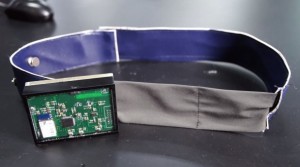 Before you lambast us for how ridiculous this idea is, hear us out. The current craze in the wearable market is fitness tracking. Most — if not all — devices include some form of fitness tracking support. Of course, wrist-worn trackers work great but while you’re in the middle of a workout you’re probably not going to be playing with your wrist much, unless you want to change music tracks. If that’s the case, let’s hope you have a better way to do that like shaking your wrist or device to jump tracks.
Before you lambast us for how ridiculous this idea is, hear us out. The current craze in the wearable market is fitness tracking. Most — if not all — devices include some form of fitness tracking support. Of course, wrist-worn trackers work great but while you’re in the middle of a workout you’re probably not going to be playing with your wrist much, unless you want to change music tracks. If that’s the case, let’s hope you have a better way to do that like shaking your wrist or device to jump tracks.
That said, wouldn’t it make sense to wear a fitness tracking belt or buckle-type device? Pedometers are traditionally worn on the hip anyway. Keep in mind, we’re not proposing that a smart belt or fitness tracking buckle include all the bells and whistles like an LED or touchscreen display and serious processing power. Instead, it would be nice if the device functioned similar to the Misfit Shine. If you’re not familar with that device, it clips on your body somewhere and connects to a smartphone to track and list personal data like calories burned, steps taken and distance traveled.
It would also be nice if that smart belt was designed to use regular watch batteries instead of a rechargeable, unless it was capable of lasting for a week or more on a single charge. The device pictured above is a smart belt that was designed to help epileptics monitor potential seizures.
Authentication Tool Wearables
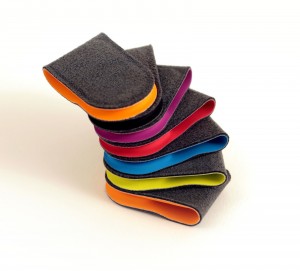 Sure, it only takes a few seconds to enter your lockscreen code, pattern or what-have-you but when you do it constantly throughout your day it can get a bit tedious. It would be nice to see a small wearable — or an existing one — that supports remote authentication. Some smartwatches already support this so the technology is definitely floating around.
Sure, it only takes a few seconds to enter your lockscreen code, pattern or what-have-you but when you do it constantly throughout your day it can get a bit tedious. It would be nice to see a small wearable — or an existing one — that supports remote authentication. Some smartwatches already support this so the technology is definitely floating around.
The way it works, when the device is within proximity of your smartphone the handset remains unlocked. In other cases you actually have to interact with the device, but it eliminates the need to put in a passcode constantly. Someone could acquire your authentication device and get into your phone sure, but the idea is that you’ll be wearing it somewhere on your person so that won’t be too likely to happen.
Motorola did something just like this with their Moto X lineup, by releasing a small clip called the Motorola Skip. The small clip allows you to immediately unlock your phone for access by simply tapping it to the clip (it uses NFC tech). The Skip also comes bundled with a couple stickers that include the same NFC functionality. For example, you could place one on your desk at your office, and just slide your phone over it when you want to take a quick glance.
What we’d really like to see is this technology incorporated with existing tech to be something truly innovative.
Wearables With Automated Photo and Video Support
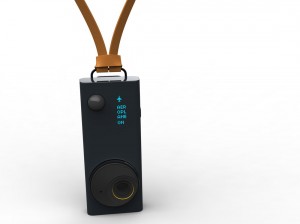 Lifelogging devices like the Autographer and even Google Glass have been around for a little bit now. It would be nice to see a few more wearables in this space that offer some type of automated photo and video functionality. We’re not asking for devices that intrude on the privacy of others, instead we’re thinking more along the lines of a remote selfie device – as ridiculous as that might sound.
Lifelogging devices like the Autographer and even Google Glass have been around for a little bit now. It would be nice to see a few more wearables in this space that offer some type of automated photo and video functionality. We’re not asking for devices that intrude on the privacy of others, instead we’re thinking more along the lines of a remote selfie device – as ridiculous as that might sound.
The idea here is not that you would wear said device all day every day, instead you’d don it when you wanted to record a special event or occassion and yet still experience it for yourself without any restrictions. You could always turn to a Go-Pro camera if you wanted something like this for high-octane activities like parachuting, skiing or something else.
We would like to see it slimmed down into a more portable form and automated in some way, that’s the biggest feature difference we’re looking for.
Increased Range for Wearables
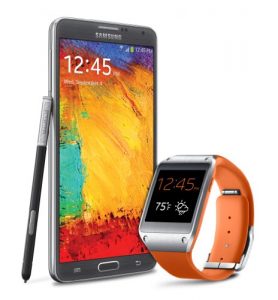 This isn’t necessarily a new device, but we’d like to see a wearable that solves the range problems of being connected to a companion device or handset. There are quite a few smartwatches and similar devices out there that lose functionality as soon as they’re out of range of a connected device. It would be nice to still receive notifications, alerts and interact with various elements for greater distances. We mean solving this problem in a way that does not require using SIM cards and mobile wireless networks directly from the wearable.
This isn’t necessarily a new device, but we’d like to see a wearable that solves the range problems of being connected to a companion device or handset. There are quite a few smartwatches and similar devices out there that lose functionality as soon as they’re out of range of a connected device. It would be nice to still receive notifications, alerts and interact with various elements for greater distances. We mean solving this problem in a way that does not require using SIM cards and mobile wireless networks directly from the wearable.
This might call for an entirely new type of wireless protocol, or perhaps even modifications to existing technology. To add to that, it won’t be happening anytime soon. Still, it would be nice to see wearables break their chains a little more.
Improved Control Schemes or Gestures for Wearables
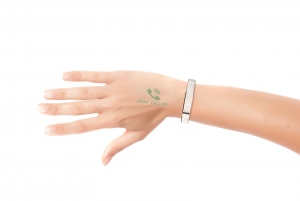 It would be nice to see a device that takes advantage of a more innovative control scheme, even if it’s just gesture support. Sure, modern smartwatches and wearables do offer this but they can still be a pain to navigate and control most of the time. To add to that, voice controls work great — when they work.
It would be nice to see a device that takes advantage of a more innovative control scheme, even if it’s just gesture support. Sure, modern smartwatches and wearables do offer this but they can still be a pain to navigate and control most of the time. To add to that, voice controls work great — when they work.
The Ritot is a particularly interesting device, that projects the screen on your skin. Perhaps if that technology were somehow merged with touch or gesture support we could truly see some wearables that offer fluid and responsive controls.
What Kind of Wearables Would You Like to See on the Market?
That’s our list of wearables we’d like to see come into fruition somehow. What kind of devices would you like to see made available? Do you agree or disagree with some of our choices? Do you have concerns about the current state of the market, or wishes to that end?
It will be interesting to see how everything plays out this year, what with Apple launching their first wearable and several more manufacturers to follow.
